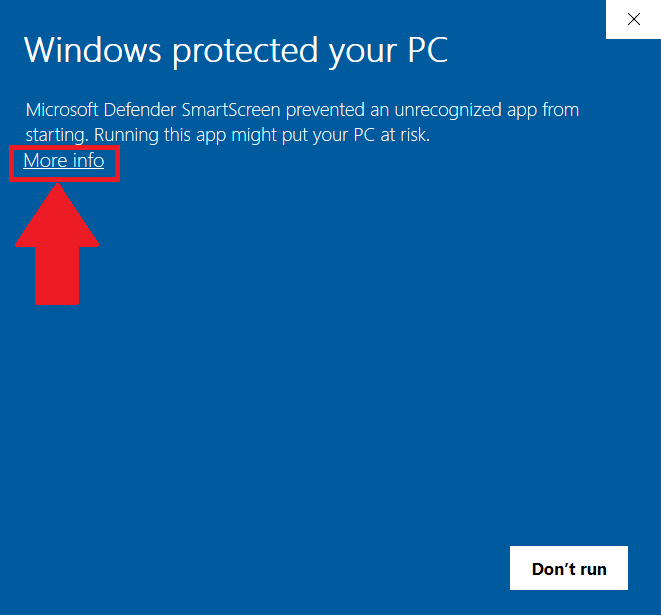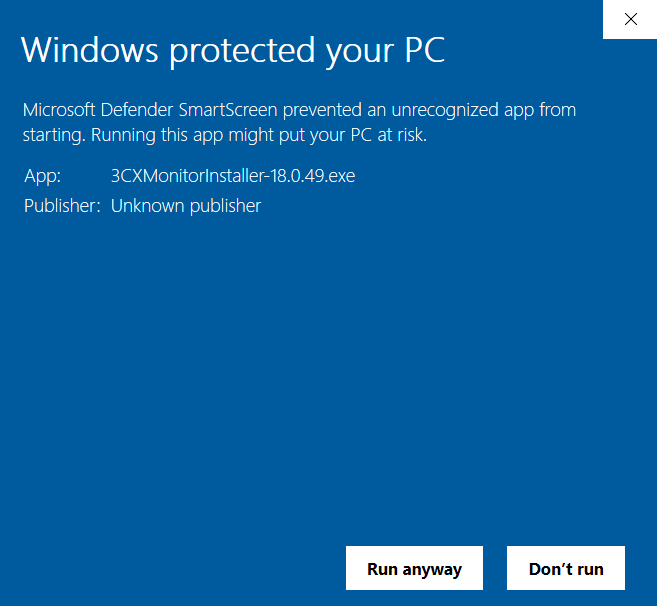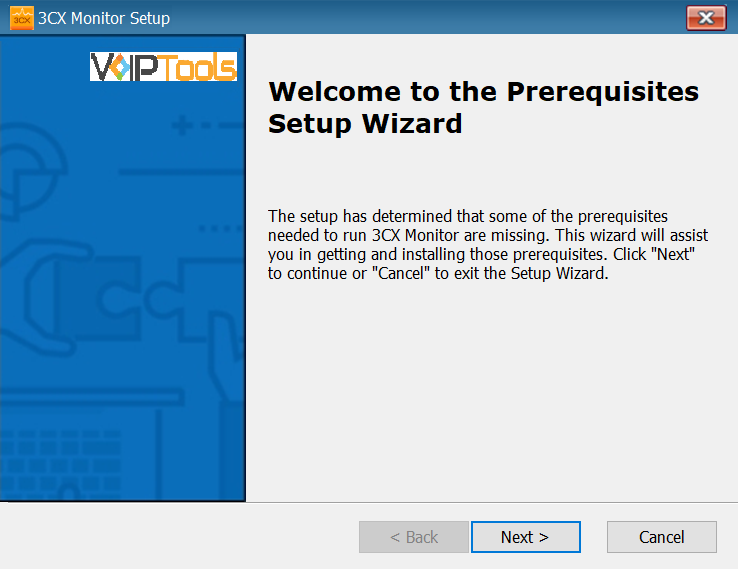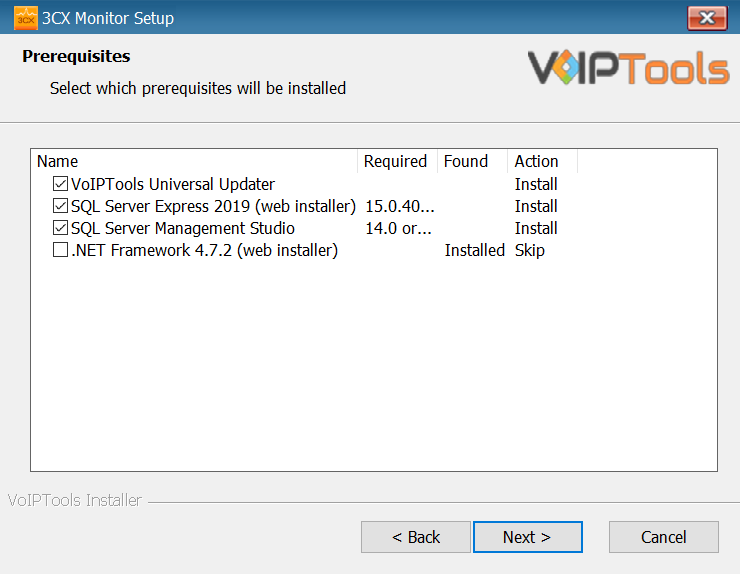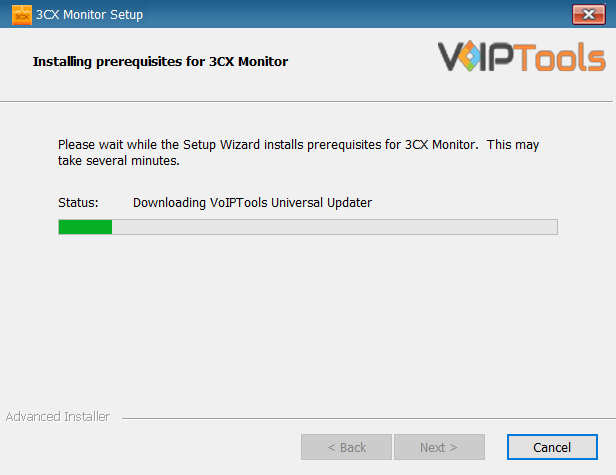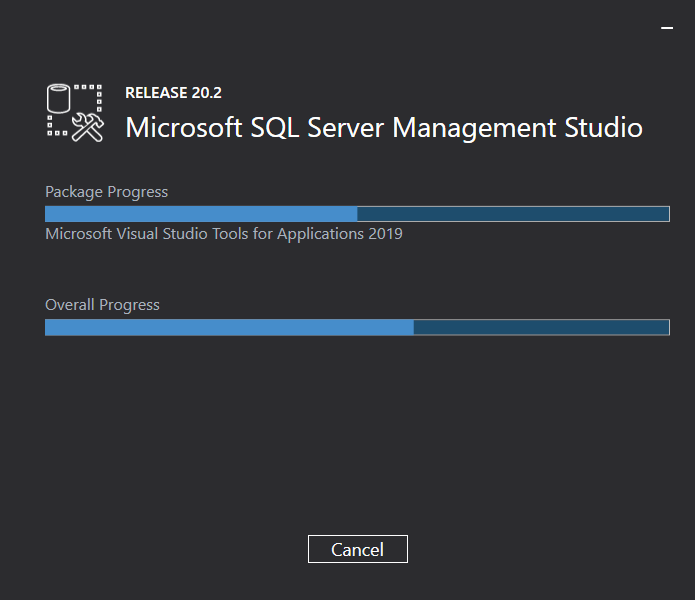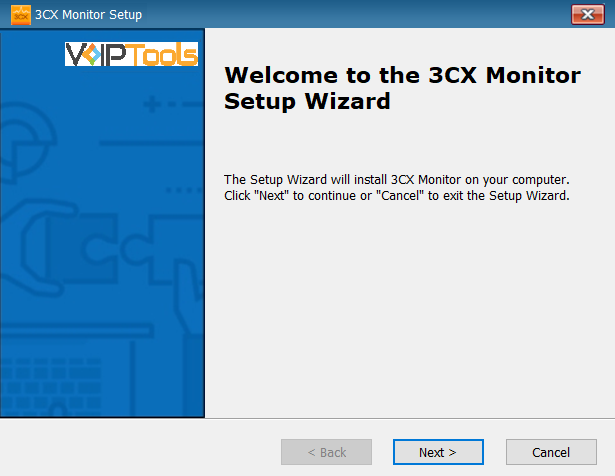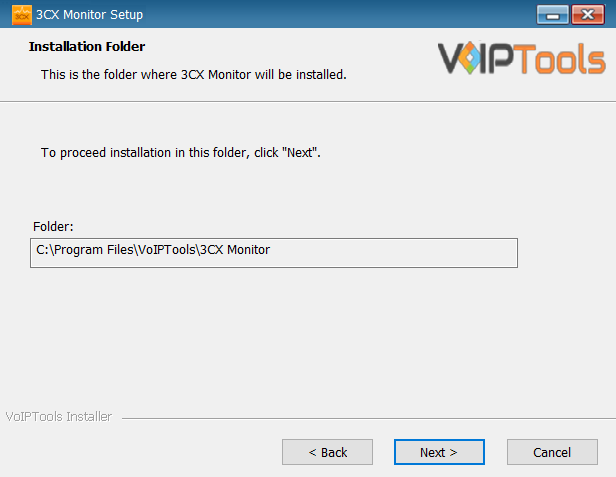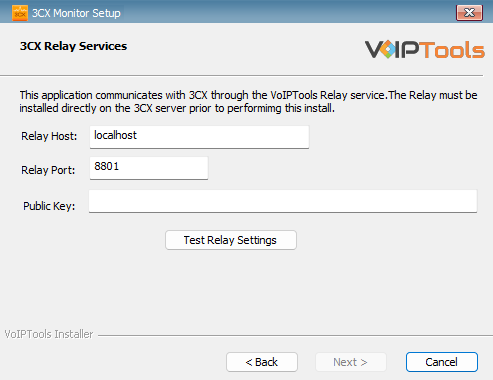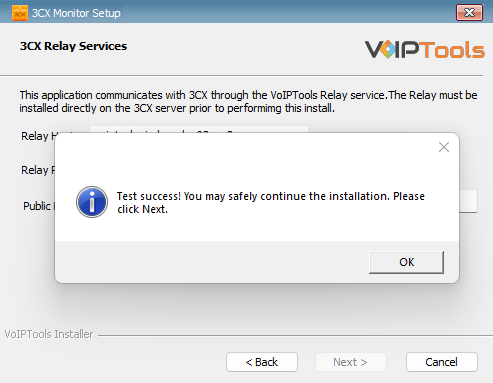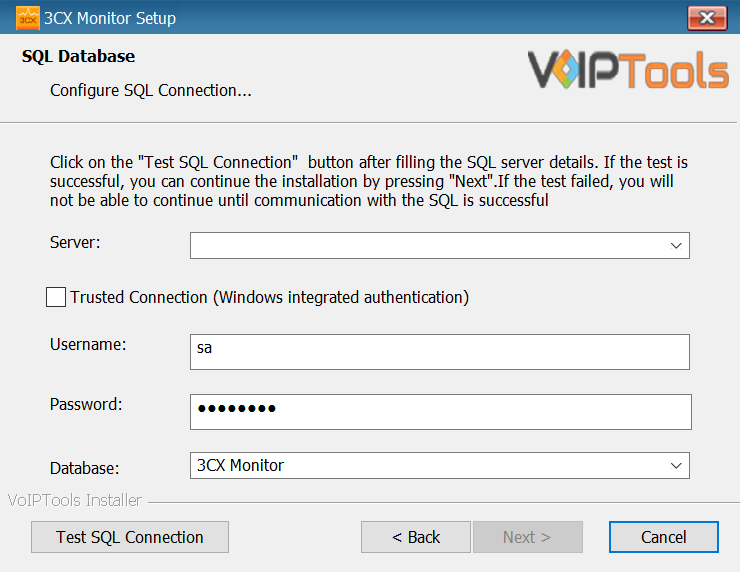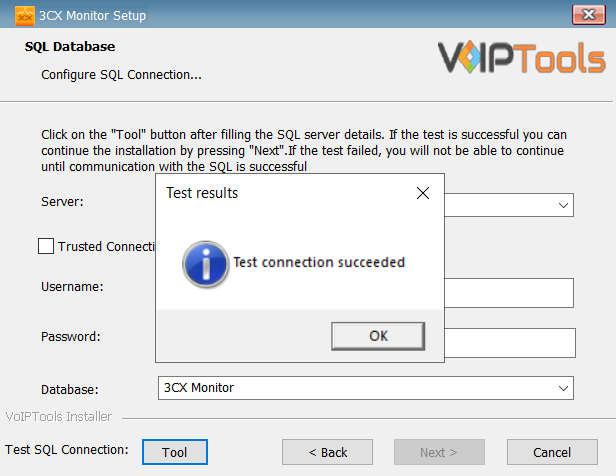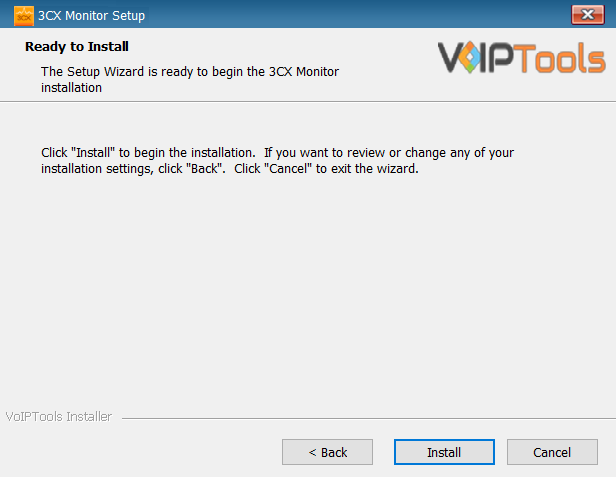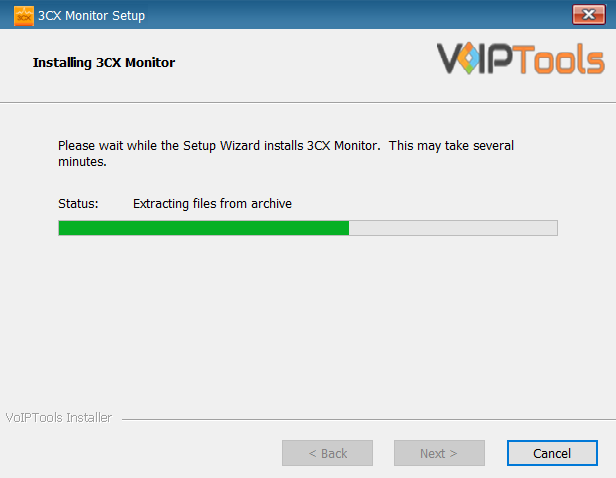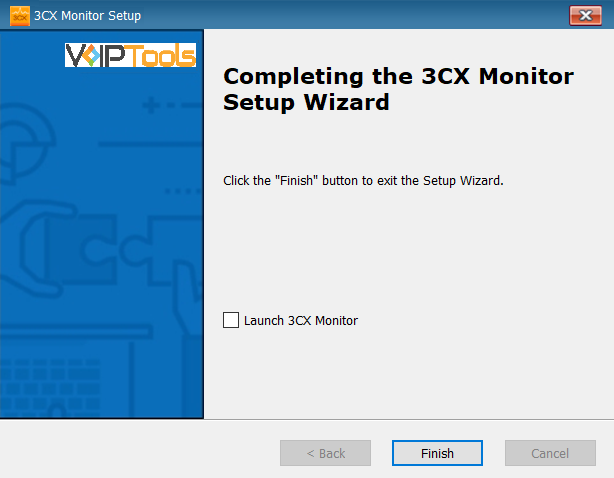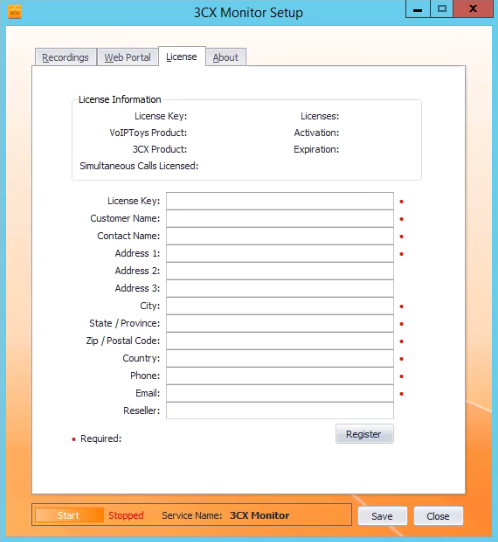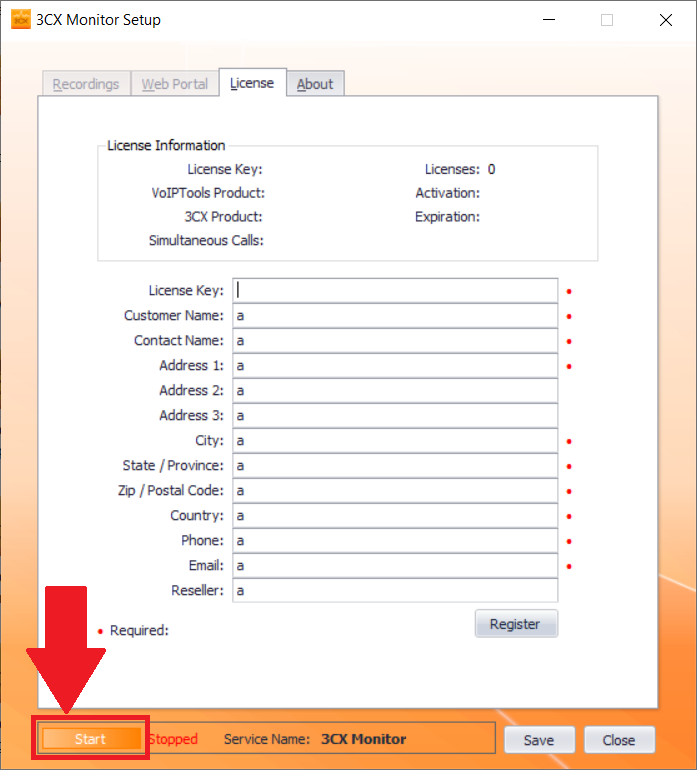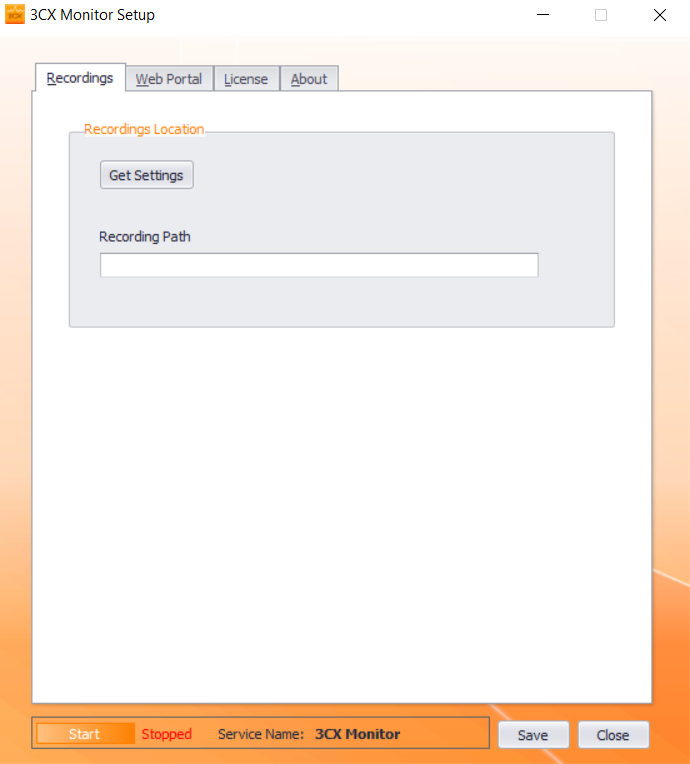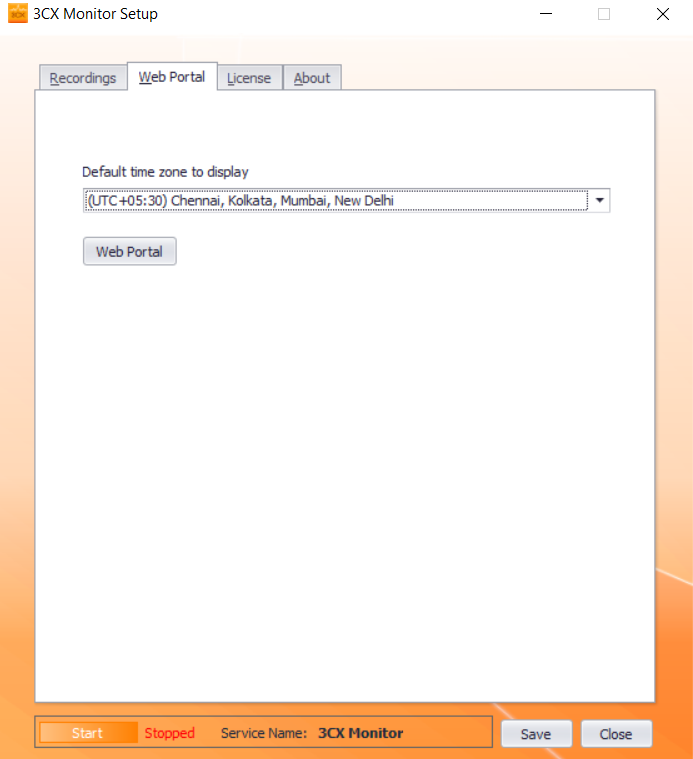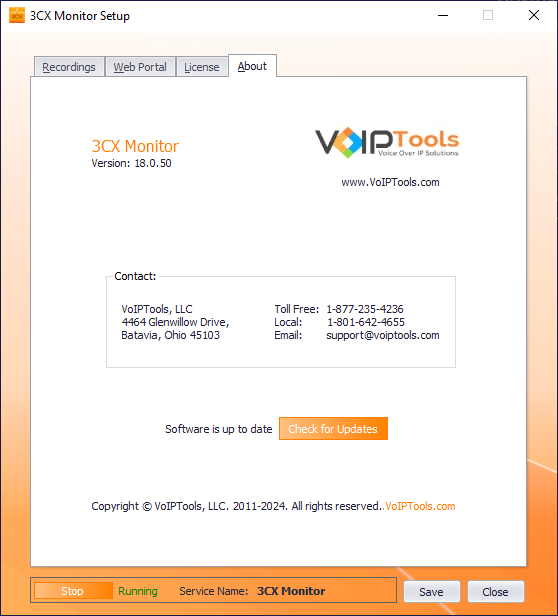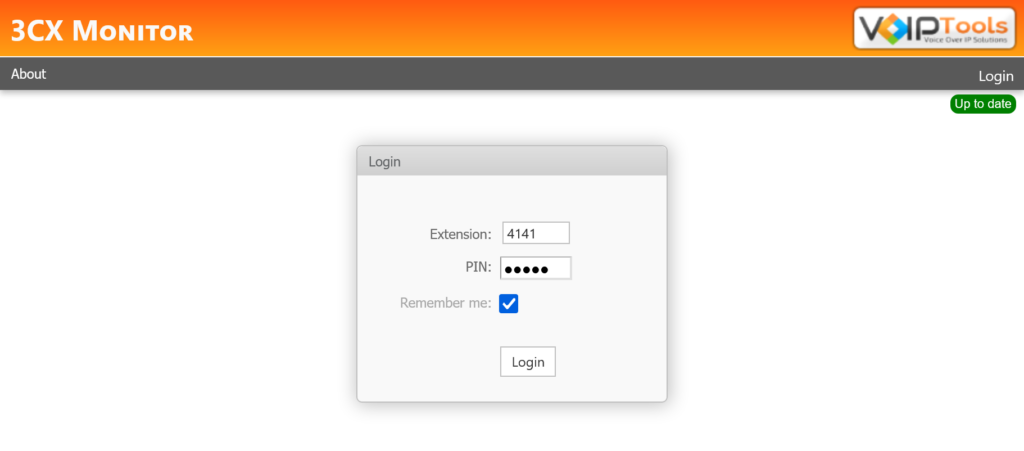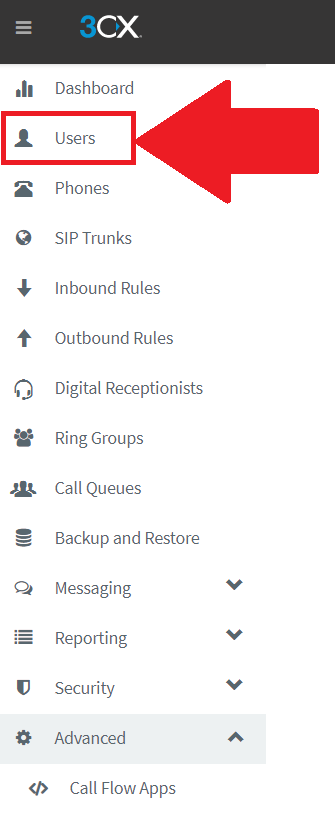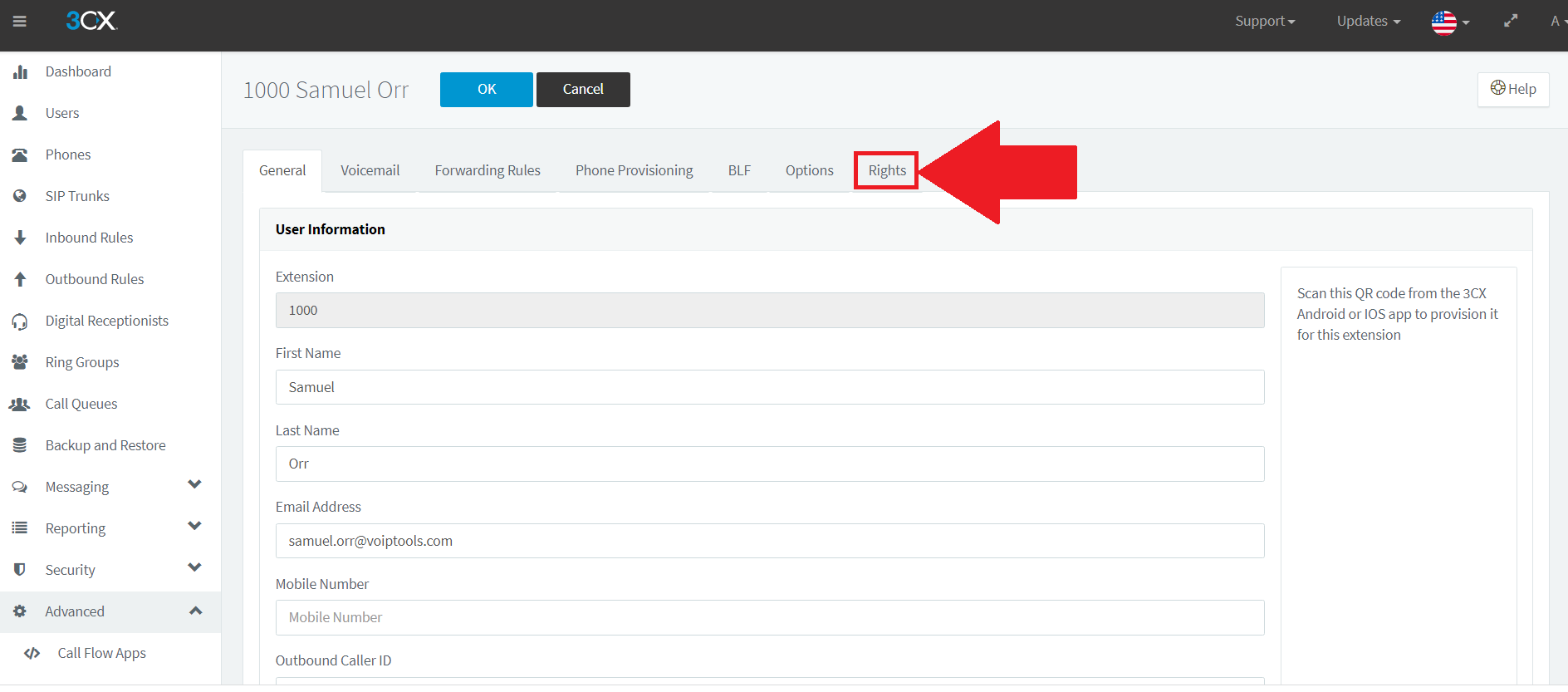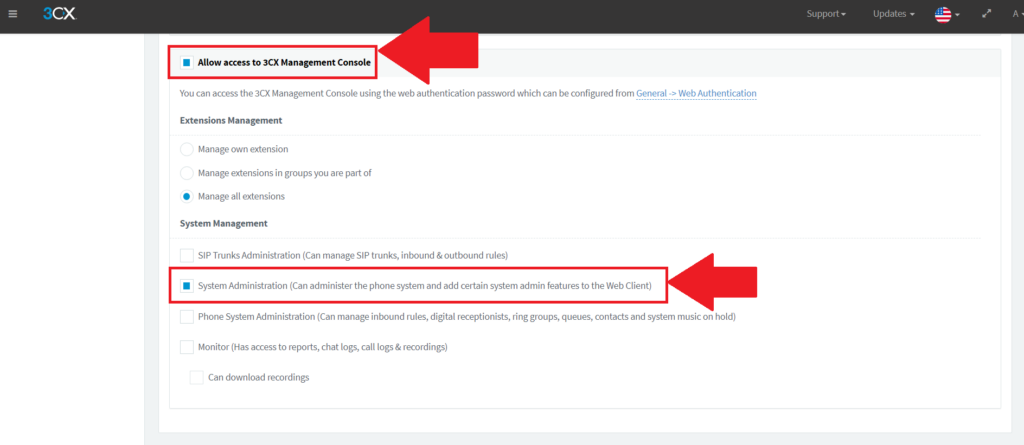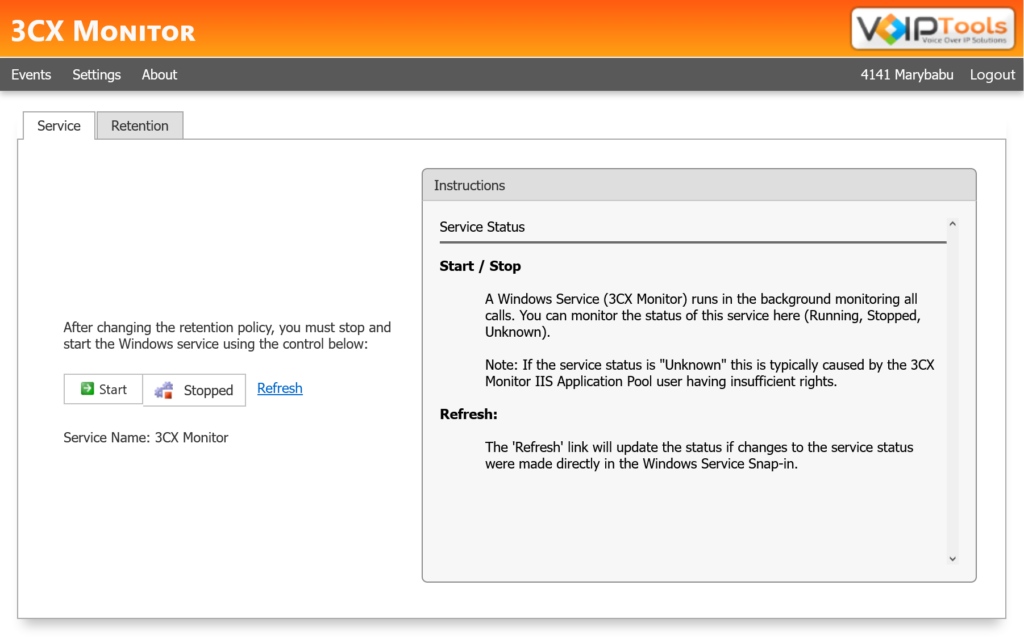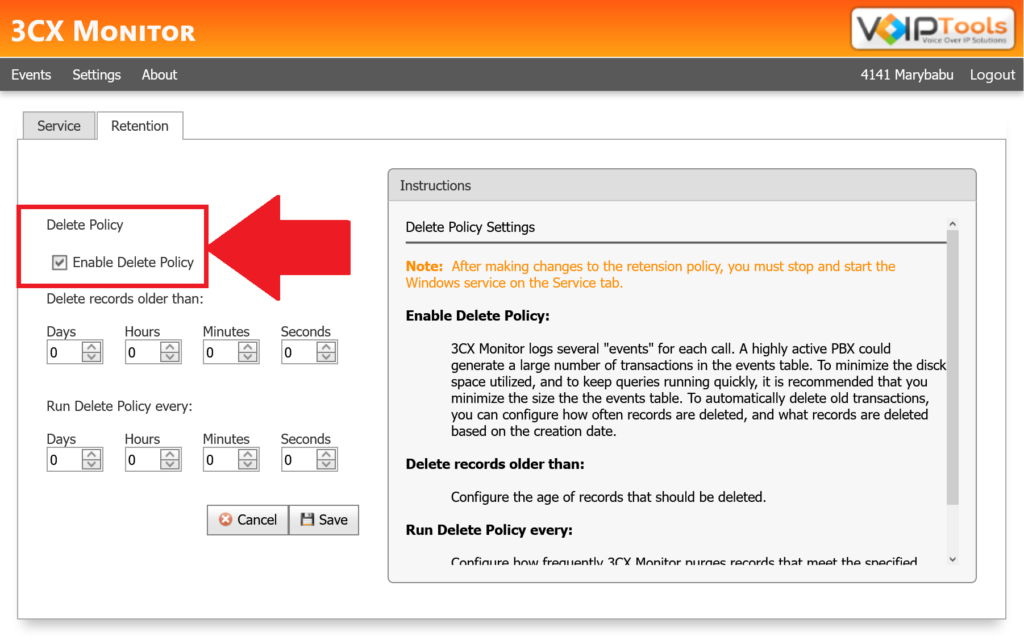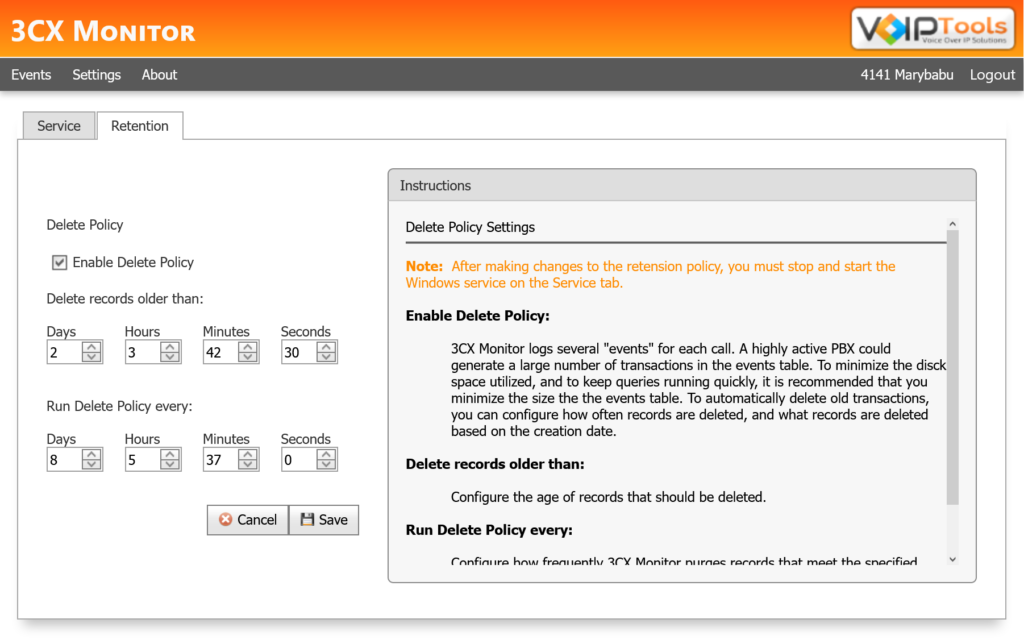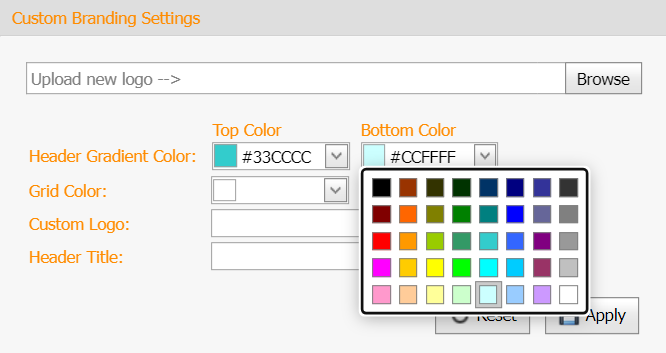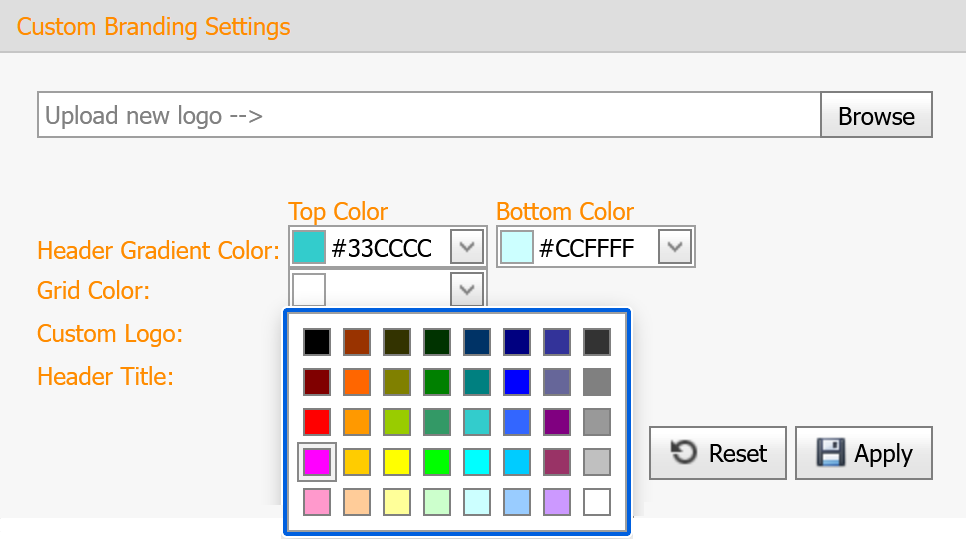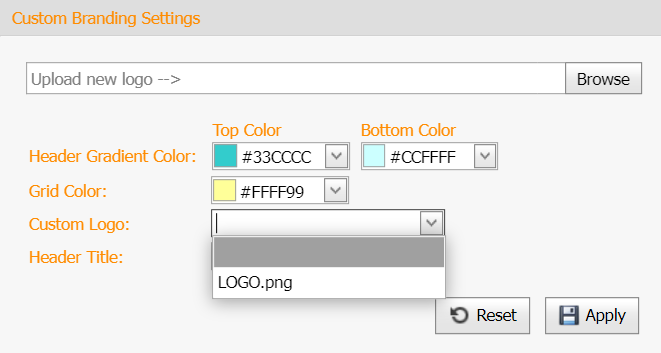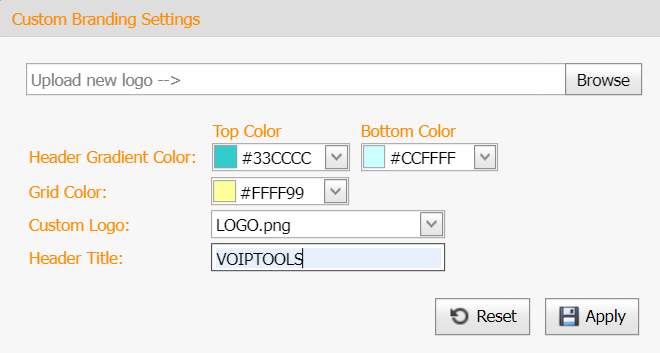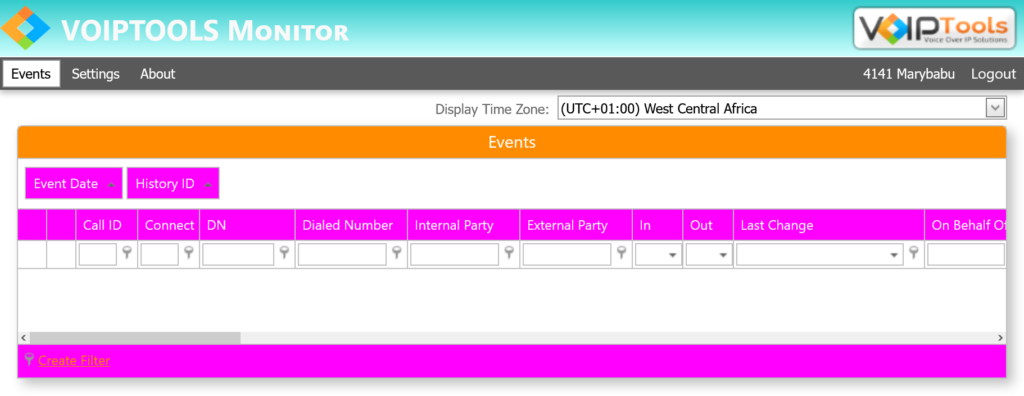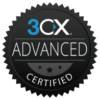Introduction #
Unlock the Power of 3CX Monitor: Your Ultimate Diagnostic Tool for Call Monitoring
Discover 3CX Monitor, a powerful diagnostic tool offering real-time insights into your call journey. From dialing to disconnecting, this game-changing tool provides a comprehensive view of call events and detailed attributes. Easily track call paths, touchpoints, and call duration with a few simple clicks. Originally developed for our internal team, it’s now available to you, ensuring seamless troubleshooting of call routing issues. Don’t miss out on this opportunity to unlock the full potential of call monitoring and stay ahead in your communication game.
Why choose 3CX Monitor? #
| EXPERIENCE REAL TIME CALL TRACKING | Explore the intriguing realm of call monitoring where all call aspects are thoroughly recorded and instantly logged. Each call’s comprehensive details are meticulously stored in a dynamic database, ready for your later review. | |
 | SEAMLESSLY ACCESSIBLE WEB PORTAL | Explore the ease of accessing your valuable data anytime, anywhere. The user-friendly web-based interface enables seamless navigation through a wealth of information, helping you swiftly find the precise details you need. |
 | REAL-TIME WALLBOARD DISPLAY | Explore call routing and monitoring with the real-time wallboard feature. Observe the call journey through an IVR, queue, agent, manager, and voicemail. Stay informed throughout the process. |
 | SECURELY STORED IN MICROSOFT SQL | Be assured that your calls are securely stored in Microsoft SQL, ensuring seamless access to your historical call information for effortless retrieval when needed. |
Prerequisites #
Before installing 3CX Monitor, you need to ensure that your computer meets the minimum requirements mentioned below:
- 3CX Version V18
- Microsoft SQL Server 2016 or above (Including the free SQL Express edition)
- Microsoft Internet Information Server (IIS) 7.0 or above
- .Net 4.7.2 or above
- Static IP for VoIPTools and 3CX servers
NOTE:
You need a Static IP for both VoIPTools and 3CX servers to ensure proper two-way communication, both the 3CX server (Relay) and the VoIPTools server. Dynamically assigned IP addresses are not supported. Additionally, it is recommended to use HTTPS for secure communication, which requires a FQDN for SSL/TLS certificate validation between the VoIPTools server and the Relay.
NOTE:
While installing SQL Server, ensure the following,
- Uninstall the previous versions of SQL Management Studio manually before installing the new version.
- Install it in “Mixed Mode” to include SQL Authentication, and install SQL Management Studio
NOTE:
- When installing IIS, be sure to install Basic Authentication, .Net Extensibility, and ASP.Net 4.X
Installation overview #
 | DOWNLOAD SOFTWARE | You can order 3CX Monitor online at https://www.voiptools.com. Your order confirmation email will include your license key and a link to download the software. |
 | INSTALL PREREQUISITES | There are a number of prerequisites that must be installed prior to installing the 3CX Monitor. These prerequisites include Microsoft Internet Information Server (IIS) and Microsoft SQL Server. |
 | INSTALL 3CX MONITOR | This User Guide contains step-by-step instructions to successfully install 3CX Monitor. Begin by extracting the installer from the downloaded zip file (Step 1 above), then run the setup program named 3CXMonitor.exe |
 | REGISTER YOUR SOFTWARE | You must register your license key to activate 3CX Monitor. Your license key is included in your order confirmation email, and can also be found in your order history on our website. |
Step-by-Step Installation Procedure #
The following section guides you through a detailed walk-through of the installation process:
Step 1: Download 3CX Monitor #
- Find the software download link in the Order Confirmation Email, or you can find it in your order history on our website and download the 3CX Monitor application.
- In the Microsoft Defender SmartScreen, click the More Info option.
- Click the Run Anyway option to start the installation.
Step 2: Install Prerequisites #
Click on the software installer that was downloaded in Step 1 above. The installation wizard will automatically identify the needed prerequisites and assist you with the installation of the prerequisites needed to run ‘3CX Monitor’. These include .NET Framework (Web Installer), SQL Server Express (Web Installer) and, SQL Server Management Studio.
- Click the downloaded installer executable to launch the Prerequisites Setup Wizard and click Next.
- In the Prerequisites window, the installer will identify the missing prerequisites. It is important that you install all the required prerequisites. However, you can select/unselect the applications to be installed based on your unique requirements. Click Next to continue.
The installer will download and install the selected applications.
- In the Microsoft SQL Server License Terms click the Accept button to acknowledge the license terms and continue.
- This page appears if you do not have SQL Server Express preinstalled in your device.
- View the SQL Server Media target location in the Media Location field. If required, you can click the Browse button to change the location. Click Install to begin the installation of SQL Server Express.
SQL server installation is in progress. This may take several minutes to complete.

- Click the Close button once the prerequisites are installed.
Microsoft SQL Management Studio installation is in progress. This may take several minutes to complete.
- In the confirmation message box, click Yes to reboot the computer.
Figure 10: Reboot confirmation message
Step 3: Start the installation process #
- After all the prerequisites are installed, the 3CX Monitor Setup Wizard appears. Click Next to Continue.
- On the Select Installation Folder window, the Folder field displays the location where the ‘3CX Monitor’ will be installed. Note that you cannot change the path. Click Next to continue.
Step 4: Test Relay Settings #
- In the 3CX Relay Services window, in the Relay Host field, enter the FQDN of your 3CX server.
- Enter 8801 in the Relay Port field.
- Enter the public key you took from VoIPTools Relay services in the Public Key text area.
- Click the Test Relay Settings to confirm ‘3CX Monitor’ can communicate with the Relay services running on the 3CX server.
- If the ‘3CX Monitor’ is successfully able to communicate with the Relay services that run on the 3CX server, a Success message box appears. Click OK. If the test fails, you will not be able to continue until communication with the relay is established.
- Click Next to continue with the installation.
NOTE:
If the test was unsuccessful:
- Confirm you have the correct firewall port open (default TCP 8801) on the 3CX server and the firewall protecting the 3CX server.
- Confirm that you have entered the correct FQDN for the 3CX server.
- Confirm that 3CX Monitor and the Relay are using the same port and protocol.
Step 5: Configure the database #
When configuring 3CX Monitor, select an existing Microsoft SQL Server instance in your environment. The database server can be a remote SQL Server, or a local instance running on the VoIPTools server.
- On the SQL Database window, in the Server field, select the desired instance of SQL Server
NOTE:
We encourage you to use SQL Authentication rather than Windows authentication. Many of our tools leverage a Call Flow Designer (CFD) application running on the 3CX. Frequently our CFD applications require access to a SQL database. If the 3CX server and the database server are not in an Active Directory domain, Windows authentication will fail. To use SQL authentication, your SQL Server must be configured to run in “Mixed Mode”. If you installed SQL Server with one of our tools, we configure SQL in “Mixed Mode”.
- To use SQL Authentication, be sure to uncheck the Trusted Connection checkbox.
- In the Username and Password fields, enter valid SQL login account credentials
- In the Username and Password fields, enter valid SQL login account credentials
- In the Database field, the installer will automatically display the default database name. We encourage you to use the default name. If you are upgrading or reinstalling 3CX Monitor, select the existing database name from the list.
- Click the Test SQL Connection button to confirm connectivity to SQL Server and then click Next to continue.
Step 6: Installing 3CX Monitor #
- In the Ready to Install window, click Install to start the installation of the ‘3CX Monitor’.
The application installation progresses.
- Once the installation is complete, check the Launch 3CX Monitor check box and then click Finish. The 3CX Monitor configuration screen opens. If you want to simply close the installer without opening the configuration screen, then simply uncheck Launch 3CX Monitor check box and then click Finish
Step 7: Register your Software #
- Click the Monitor Desktop Icon
 to open the 3CX Monitor Setup screen.
to open the 3CX Monitor Setup screen. - On the 3CX Monitor Setup configuration screen, and in the License tab, enter your registration information in all the fields (Note the red dot denotes a required field).
- Click Register to register your software.
NOTE:
The license key permits you to install the software on one computer. This is not free software.
3CX Monitor Setup #
The configuration screen enables you to register software, configure ‘Recording Path’ for storing the recording files, configure ‘Default Time Zone’, start/ stop the ‘3CX Monitor’ service and connect to the 3CX Monitor web portal.
Start/ Stop Service #
- At the footer of the 3CX Monitor Setup configuration screen, click the Start button to start the ‘3CX Monitor’ service.
- Click Stop to stop the service.
NOTE:
You can monitor the status of ‘3CX Monitor’ service at the footer of the ‘Recordings’ screen. Typically, the status values are ‘Running’, ‘Stopped’ or ‘Unknown’.
Recordings #
The Recordings screen enables you to configure the ‘Recording Path’ for storing the recording files. From here, you can also start or stop the ‘3CX Monitor service.
Configure Recording Path #
- On the 3CX Monitor Setup configuration screen, and in the Recordings tab, under the Recordings Locations section, click Get Settings button if you want to configure the default path for recordings.
- To set your own path, click the Browse button to browse the location of your choice for storing the recording files.
- Click Save to save the path.
Windows Authentication #
If the server where ‘3CX Monitor’ is installed and the 3CX server both participate in the same Active Directory (AD) domain, you can enter an AD domain account. However, if both servers are not participating in the same AD domain, you will need to provide credentials for a local Windows user that exists on the 3CX server.
Active Directory User: #
- Under the Windows Authentication section, if you check Active Directory User box, you will need to perform several tasks:
- Change the 3CX Monitor IIS Application Pool login user.
- Recycle the IIS Application Pool and Website.
- Change the 3CX Monitor Windows Service login user.
- Grant the user “Login as a service right”.
- Restart the 3CX Monitor service.

| DOMAIN NAME | Windows Domain Name |
|---|---|
| USER NAME | Windows Domain User Name |
| PASSWORD | Windows User Password |
Remote Local User #
- If you check Remote Local User box, a ‘Net Use’ command connects to the remote shared folder using the supplied credentials of a local user that exists on the 3CX server.
- Unlike the “Active Directory User” option, this option will NOT make changes to the ‘3CX Monitor’ Windows service account or change the IIS application pool authentication.

| DOMAIN NAME | 3CX Server Name |
|---|---|
| USER NAME | 3CX Server-Local User Name |
| PASSWORD | 3CX Server-Local Password |
Web Portal #
From the Web Portal screen, you can configure the default time zone for the data to display in the entire application. From here, you can also connect to Web Portal by simply clicking on the Web Portal button.
About #
The Check for Updates button in the About tab enables you to easily download the latest version of 3CX Monitor. If a newer version of 3CX Monitor is available, the message will indicate that a newer version is available. Clicking the button will automatically download a .zip file of the latest version of the software. You can install the new version directly over the top of a previous version without the need to uninstall the previous version.
Web Portal #
To access the ‘3CX Monitor’ web portal, click the Web Portal button on the configuration program, or click on the desktop icon that was created during the installation process (3CX Monitor).
When connecting to the web portal, you will be asked to provide login credentials.
- In the Extension field, enter your 3CX extension number.
- In the PIN field, enter your 3CX voicemail PIN.
- Click Login button to login to your account.
NOTE:
You can login to ‘3CX Monitor’ Web Portal only as an admin. To know how to setup an extension as a 3CX System Admin, click here.
Instructions to Setup an Extension as a 3CX System Admin #
- On the 3CX Management Console in the left-side panel, select the Users menu.
- On the tab bar, click the Rights tab.
- In the Rights tab, do the following,
- Check the Allow access to 3CX Management Console checkbox.
- Under System Management, select the System Administration checkbox.
Settings #
The Settings tab enables you to start or stop a service, configure delete policy settings and customize brand settings.
Hover over the mouse on the Settings tab to display the dropdown menu with the following menu options:
Monitor Settings #
Monitor Settings enable you to start/ stop service and configure delete policy settings.
- Hover over the mouse on the Settings tab and select Monitor Settings to view Service and Retention tabs.
Service #
The Service screen enables you to start or stop a service. Once you change the retention policy, you must stop and start the Windows service (3CX Monitor) on the Service tab.
- Start/Stop: A Windows Service (3CX Monitor) runs in the background monitoring for completed calls. You can monitor the status of this service here (Running, Stopped, Unknown)
NOTE:
- Every time you change the retention policy, you must stop and start the Windows Service.
Refresh The ‘Refresh’ link will update the status if changes to the service status were made directly in the Windows Service Snap-in Service Name The name of the Windows Service that runs in the background monitoring for completed calls
- If the service status is “Unknown”, this is typically caused by the 3CX Monitor IIS Application Pool user having insufficient rights.
Retention #
Retention screen enables you to configure delete policy settings. 3CX Monitor logs several “events” for each call. A highly active PBX could generate a large number of transactions in the events table. To minimize the disk space utilized, and to keep queries running quickly, it is recommended that you minimize the size of the events tables. To automatically delete old transactions, you can configure how often records are deleted, and what records are deleted based on the creation date.
If you enable ‘Delete Retention Policy’, the records will be deleted based on the time zone of the server in which the relay is installed.
- Hover over the mouse on Settings tab and from the dropdown menu, select Monitor Settings.
- On the Settings menu, and in the Retention tab, under Delete Policy, check Enable Delete Policy check box if you want to enable the feature of automatically deleting old transactions.
- Under Delete records older than: and from the Days, Hours, Minutes and Seconds time boxes, configure the age of the records that should be deleted.
- Under Run Delete Policy every: and from the Days, Hours, Minutes and Seconds time boxes, configure how frequently 3CX Monitor purges records that meet the specified age.
- Click Save
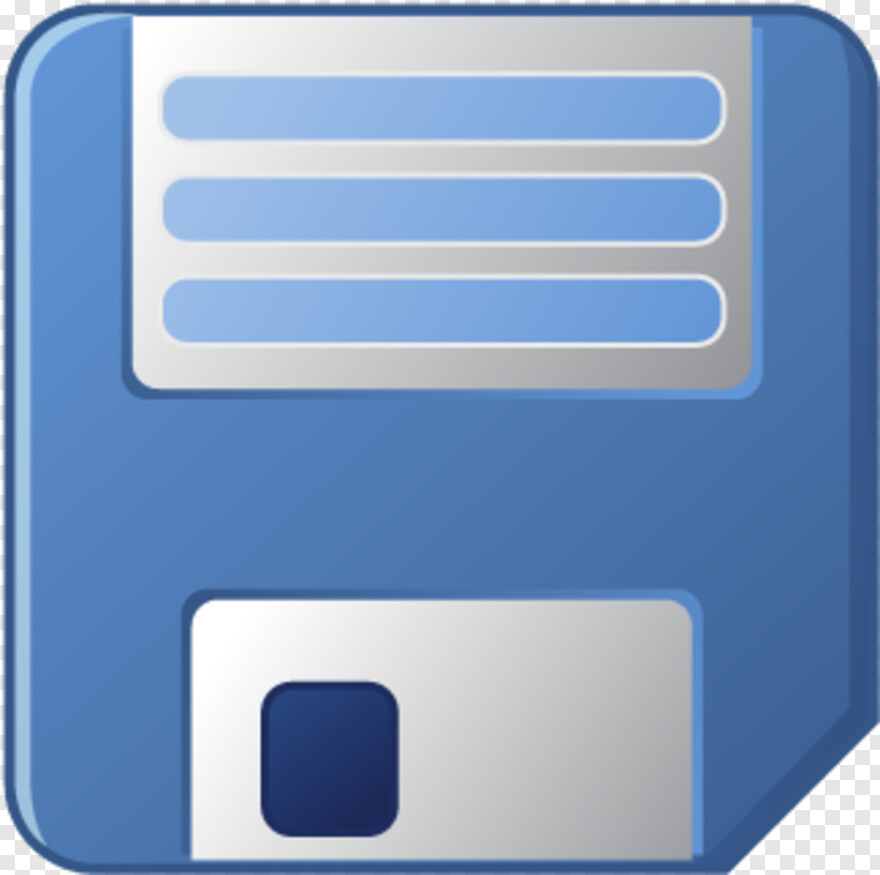 to save the delete policy.
to save the delete policy.
NOTE:
Once you change the retention policy, you must stop and start the Windows service (3CX Monitor) on the Service tab.
Site Settings #
Site Settings enable you to customize branding settings for the application that include the following:
- Customize the gradient color of ‘Application Header’
- Customize grid color in screens that display grid data
- Customize logo on the ‘Application Header’
- Customize ‘Header Title Prefix’ on the ‘Application Header’
Custom Brand Settings
- Hover over the mouse on Settings tab and from the drop down menu, select Site Settings
- Perform any of the desired customizations and click the Apply
 button to save your customizations.
button to save your customizations.
Customize Application Title Header – Gradient Color #
- In the Header Colour section do the following,
- Select the top paint from the Top Colour color palette.
- Select the bottom paint from the Bottom Colour color palette.
- Click Apply
 to Save the settings.
to Save the settings.
Customize Grid Color #
- From the Grid Color palette, select the color that you want to display for the grid in screens that display grid data
- Click Apply
 to save your settings.
to save your settings.
Customize Logo #
- If you are uploading the logo for the first time then,
- In the Custom Logo section, click Chose File button to choose a logo from your device.
- Select the uploaded logo from the Select Logo dropdown list.
- Click Apply
 to save your changes.
to save your changes.
- If your have uploaded the logo,
- Select the uploaded logo from the Select Logo dropdown list.
- Click Apply
 to save your changes.
to save your changes.
Customize ‘Header Title Prefix’ Text #
- In the Header Title field, enter the text that you want the application to display as a ‘prefix’ for the existing title in the application header.
- Click Apply
 to save the header title prefix.
to save the header title prefix.
The final result of the page when you do all the customizations,
Events #
Events tab displays all the events of a call. It records complete call progress from “dialing” to “disconnect”. The details help you to follow the path the call took, and see a complete list of attributes.
| EVENT DATE | Displays the date on which the event (call) has taken place. |
|---|---|
| HISTORY ID | Displays the unique ID of the history item. |
| CALL ID | The unique ID of the call and this call includes details of every call leg. |
| CONNECT | Displays the connection ID of the person in the call. For instance, if a first person initiates the call to the second person, the connect ID for the first person would be ‘1’ and that for the second person would be ‘2’. Now, if a third person is added to the call through a call transfer, say for instance, then the connect ID for the third person would be ‘3’. If a fourth person adds to the call again, then it would be ‘4’, and so on. |
| DN | It is the dialling number, which means the number from which the call is initiated. |
| DIALED NUMBER | It is the dialled number, which means the number to which the call is dialed. |
| INTERNAL PARTY | It is the calling party. |
| EXTERNAL PARTY | It is the Called Party. |
| IN | Indicates that it is an inbound call for the number displayed in the Dialing Number column in that specific call leg of the call. |
| OUT | Indicates that it is an outbound call for the number displayed in the Dialing Number column in that specific call leg of the call. |
| LAST CHANGE | The latest time at which the event of a call leg has changed. |
| ON BEHALF OF | Displays the number of the person on whose behalf a voicemail has been recorded. For instance, if the first person called the second person but if the call was left unanswered then, the call gets connected to the voicemail where the first person records the message on behalf of the second person. Hence, in this case, On Behalf Of column displays the number of the second person. |
| ORIGINATED BY | It displays the ‘Virtual Extension Number’ of the ‘Ring Group’ to which you have made an outbound call. |
| REFERRED BY | Displays Connection ID of the person that has transferred the call. |
| STATUS | Displays the present status of the call leg as ‘Dialing’, ‘Ringing’ or ‘Connected’. |
| EVENT | Displays the event of call leg record in the database as, ‘Insert’, ‘Update’ or ‘Delete’. |
| RECORDING FILE | Displays the name of the audio recorded (.wav) file. |
| ATTACHED DATA | Displays the connection information of the call. |
Get Reports: #
Follow the instructions to generate the reports in the Events tab for a desired range,
- In the Start Time dropdown, select the starting date of your date range.
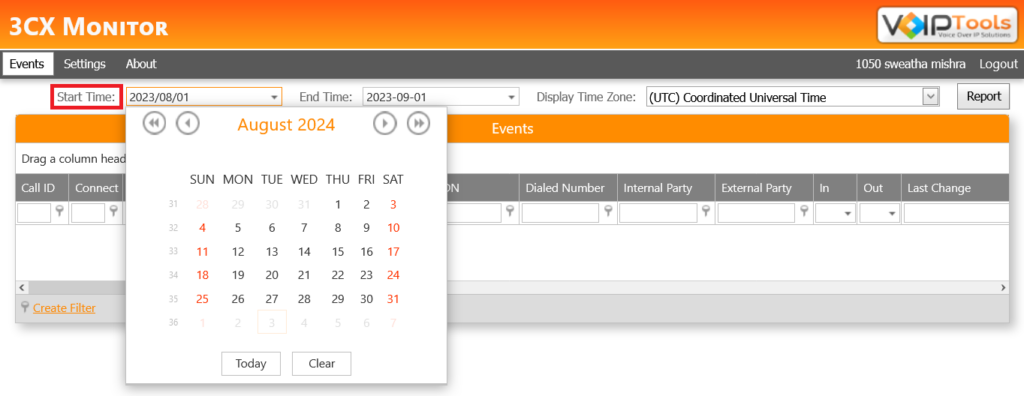
- In the End Time dropdown, select the end date of your date range.
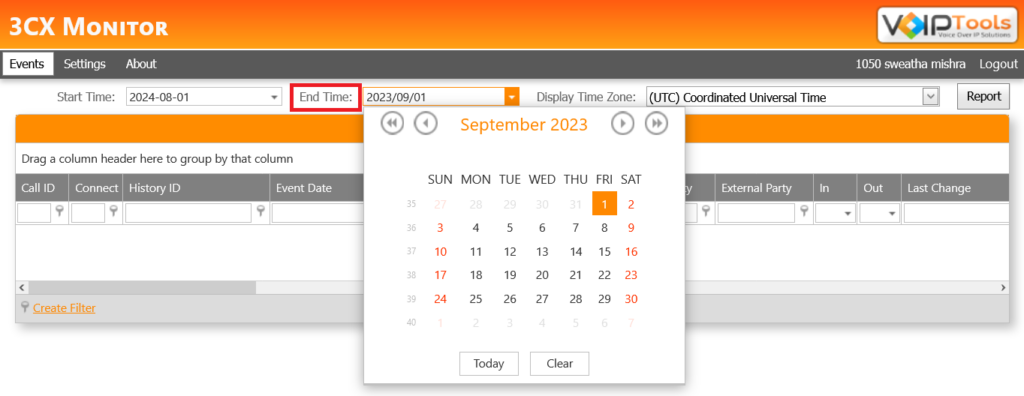
- In the Display Time Zone dropdown select the time zone in which you want to generate the report.

- Click the Report button to generate the report.

The 3CX Monitor generates the report for the selected range,
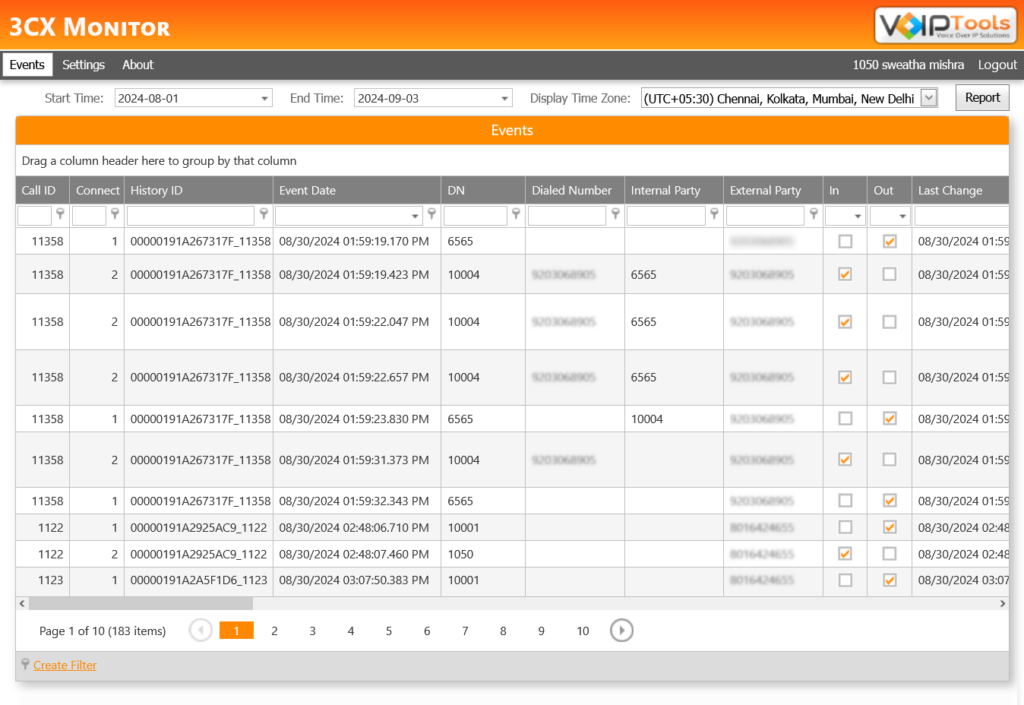
Group Columns: #
This feature lets you group columns in reports, making it easier to organize and view related data together. This helps you quickly identify patterns and trends, improves data readability, and allows you to focus on the information that matters most, enhancing your overall efficiency.
- Drag the desired column to the space above the column header to group the column.
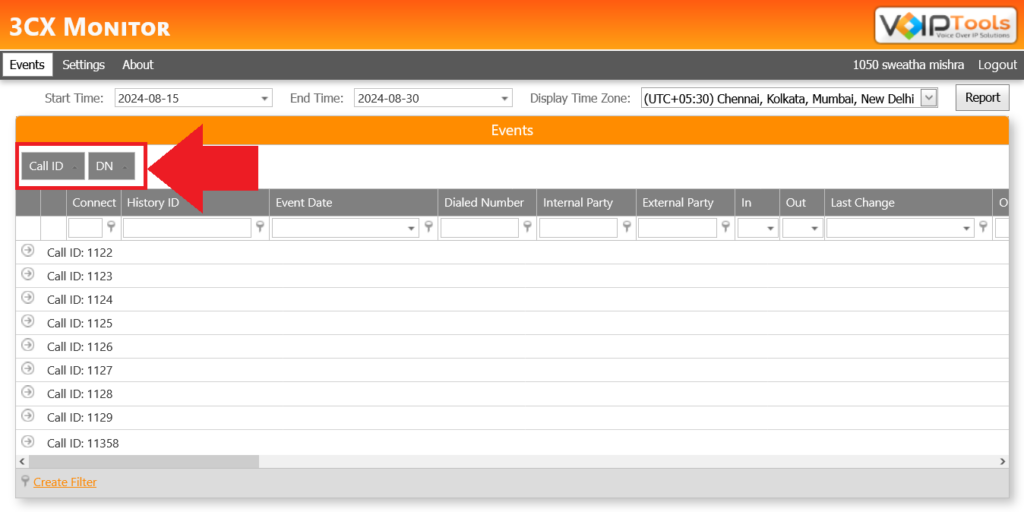
- Click the Expand
 button to expand the columns.
button to expand the columns.
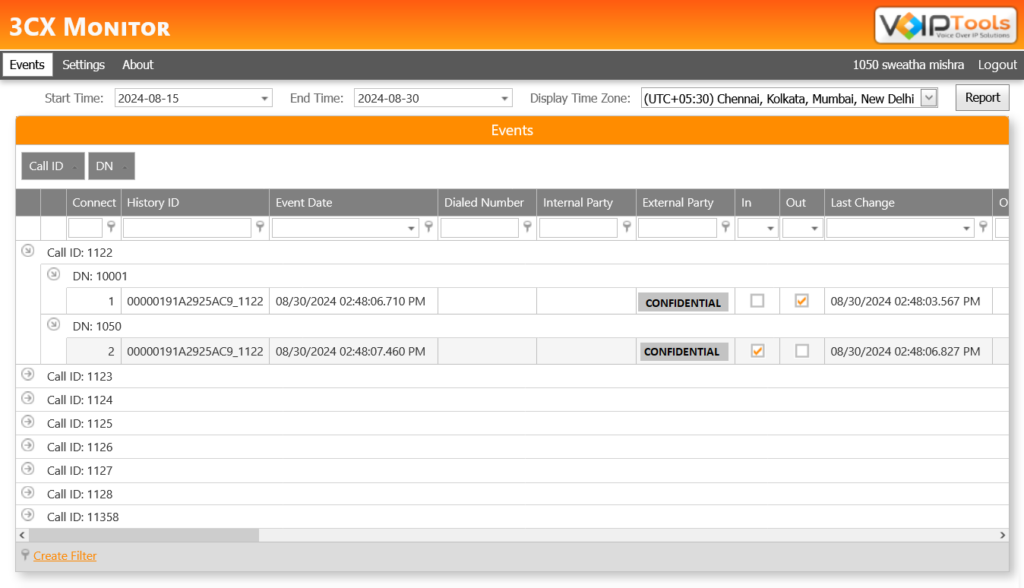
Possible Calling Scenarios #
In this section, you can take a look at how ‘3CX Monitor’ monitors the call progress of calls in various possible scenarios:
- Scenario 1: Call from Extension to IVR
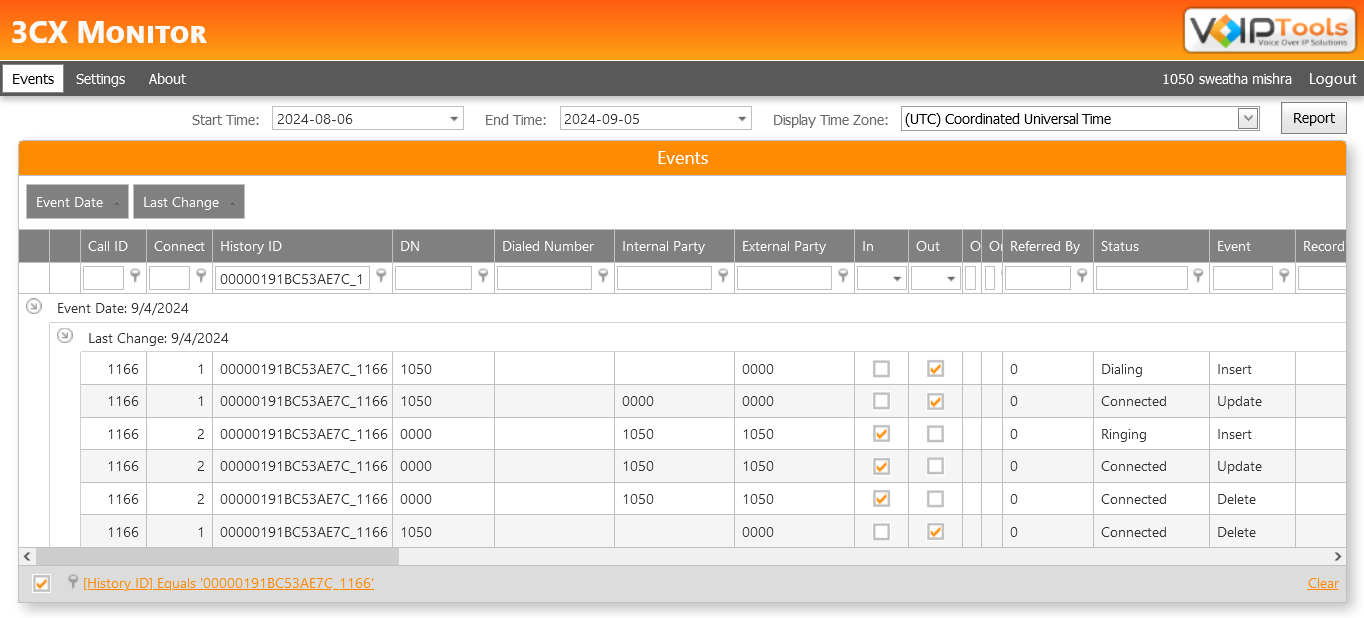
- Scenario 2: Call from Extension to Outside Number
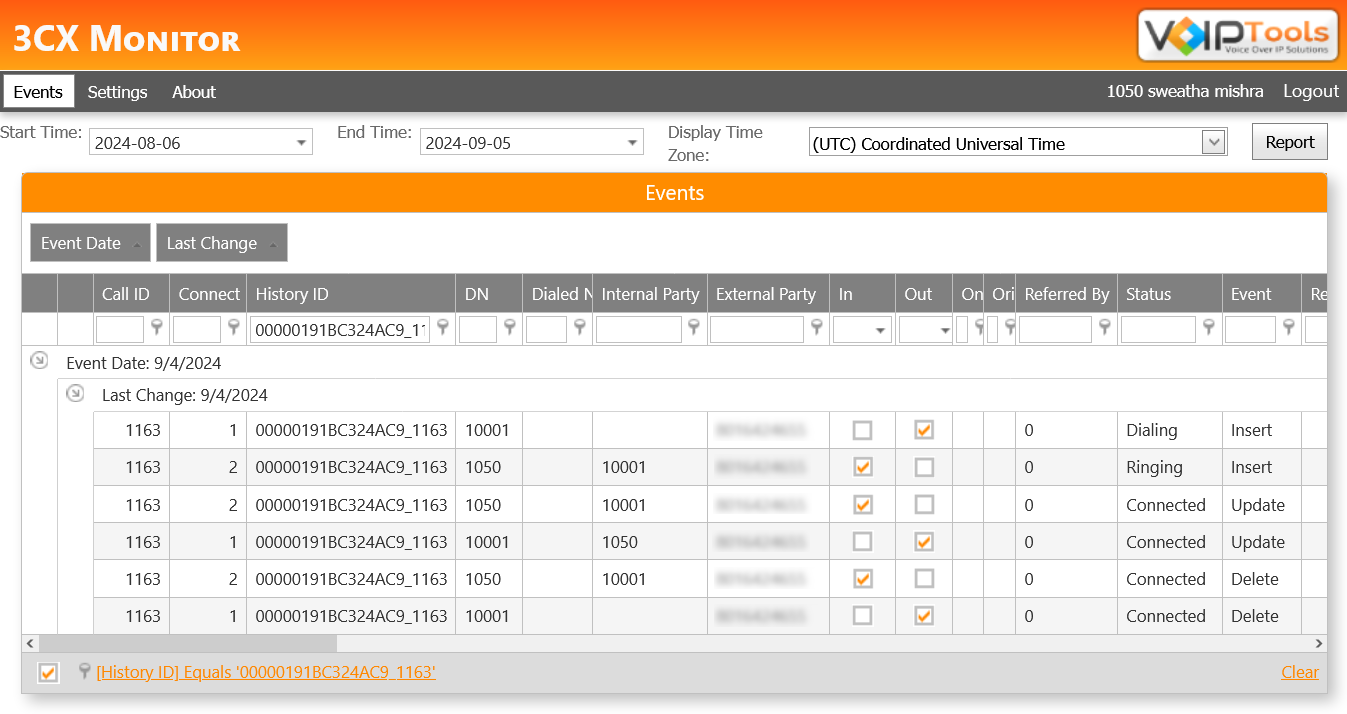
- Scenario 3: Call from Extension to Extension
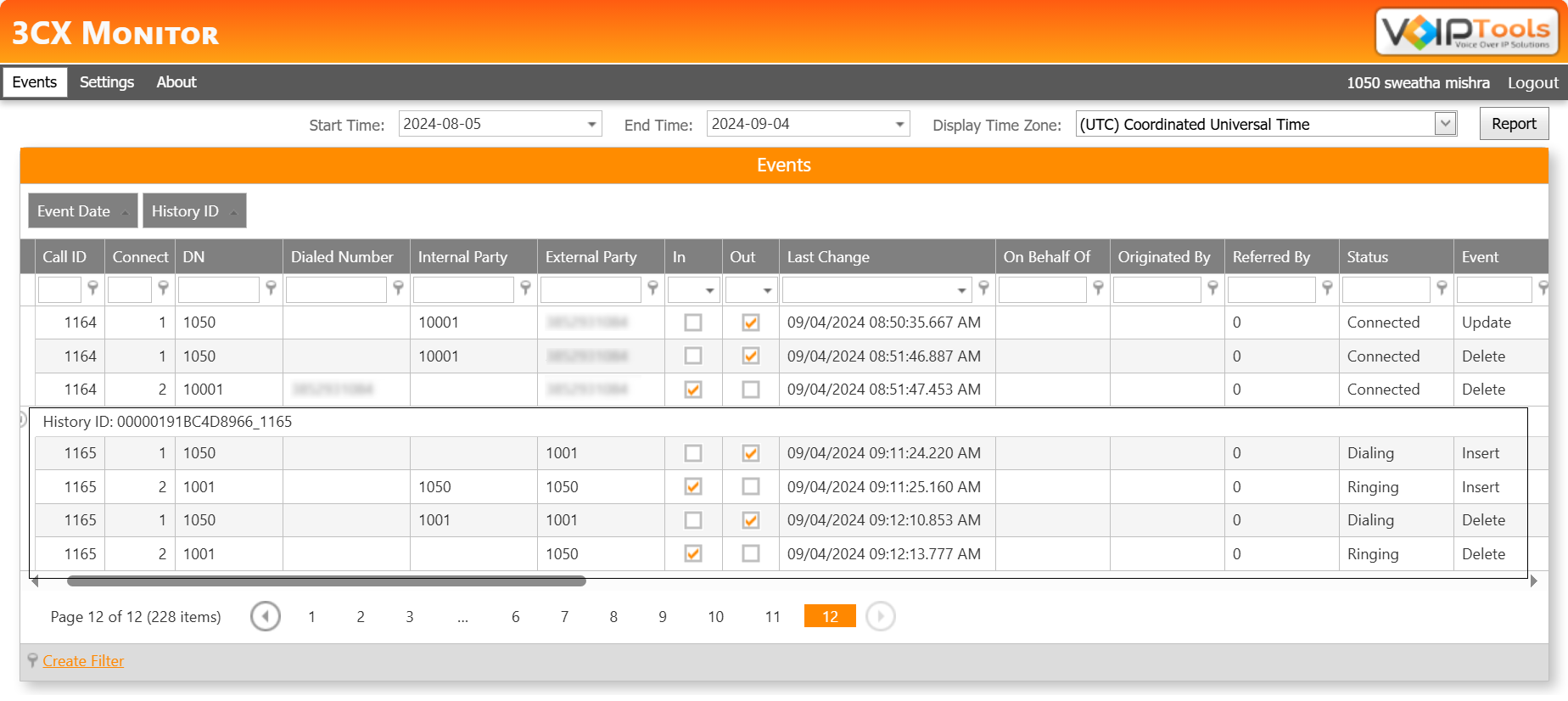
- Scenario 4: Call from Extension to Extension, and then perform a call transfer
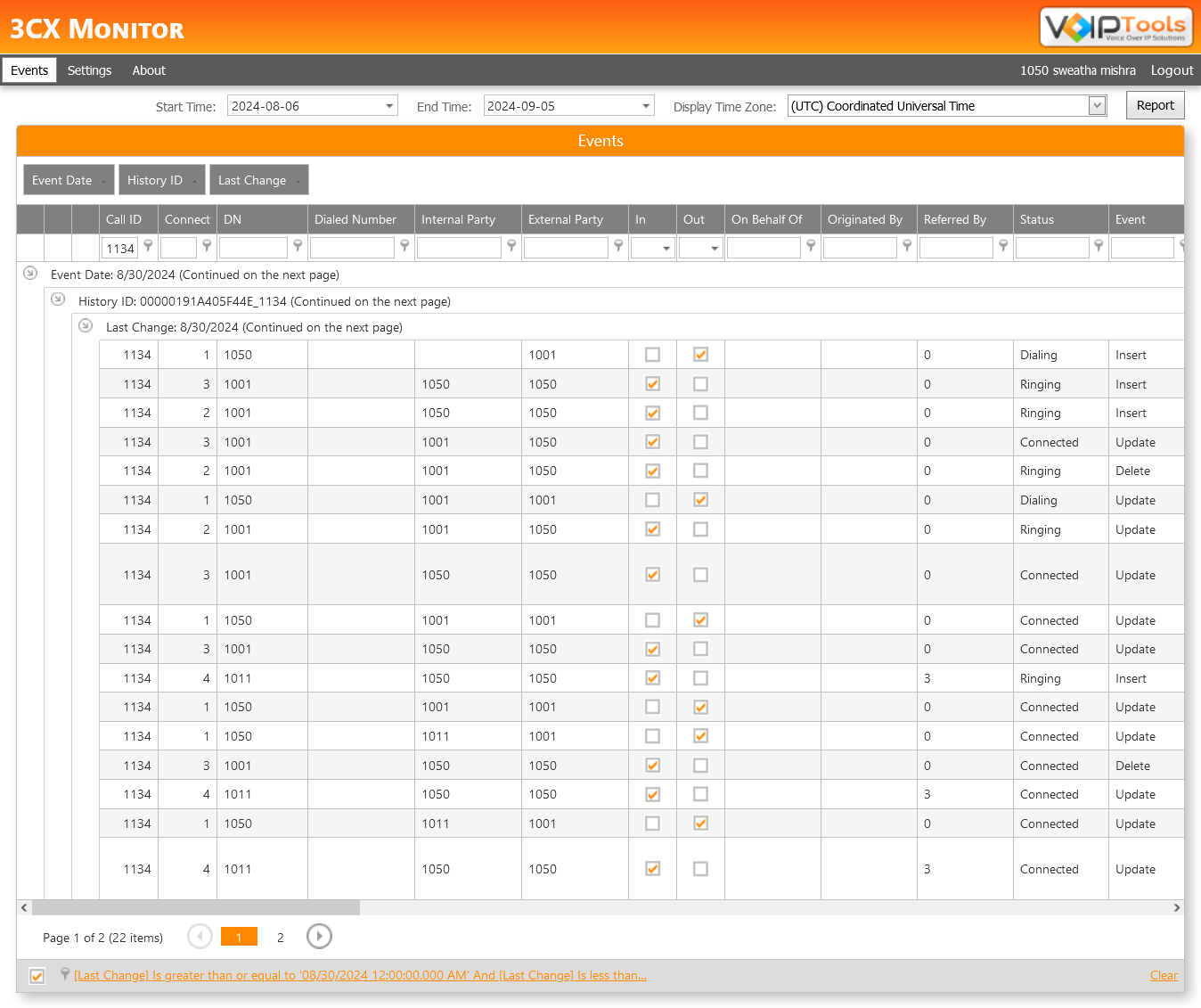
- Scenario 5: Call from Extension to Ring Group
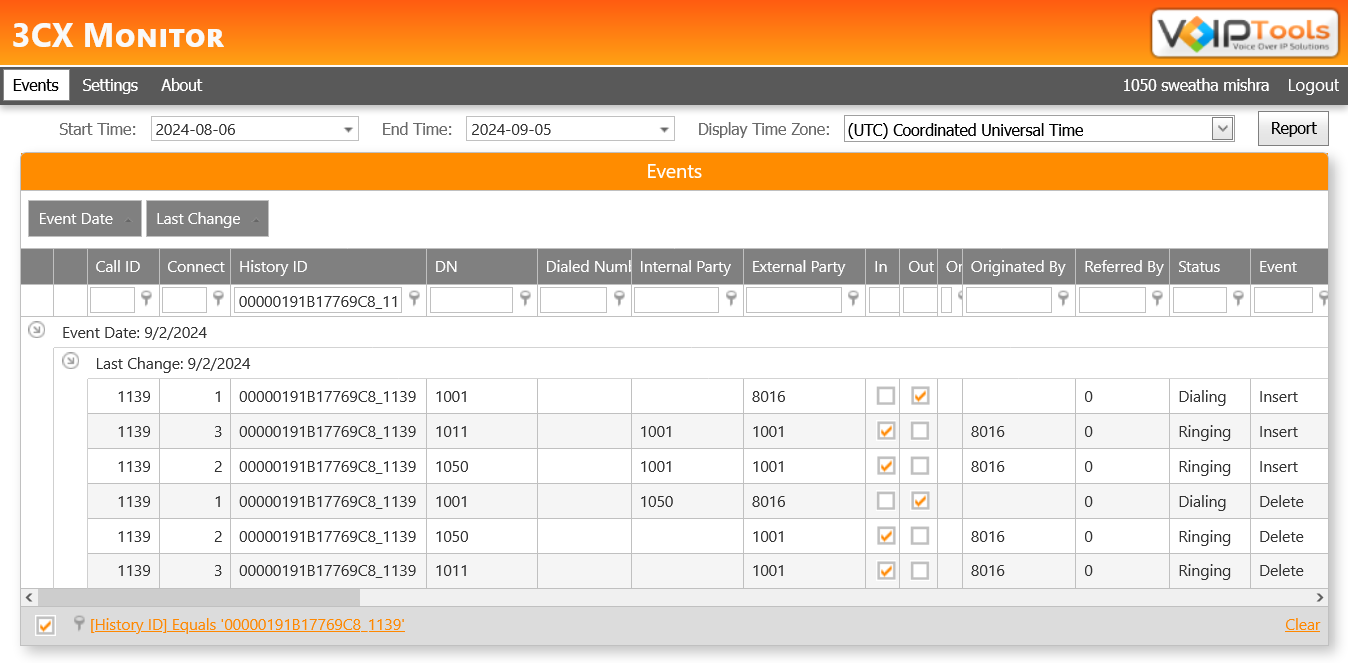
- Scenario 6: An Unanswered Call
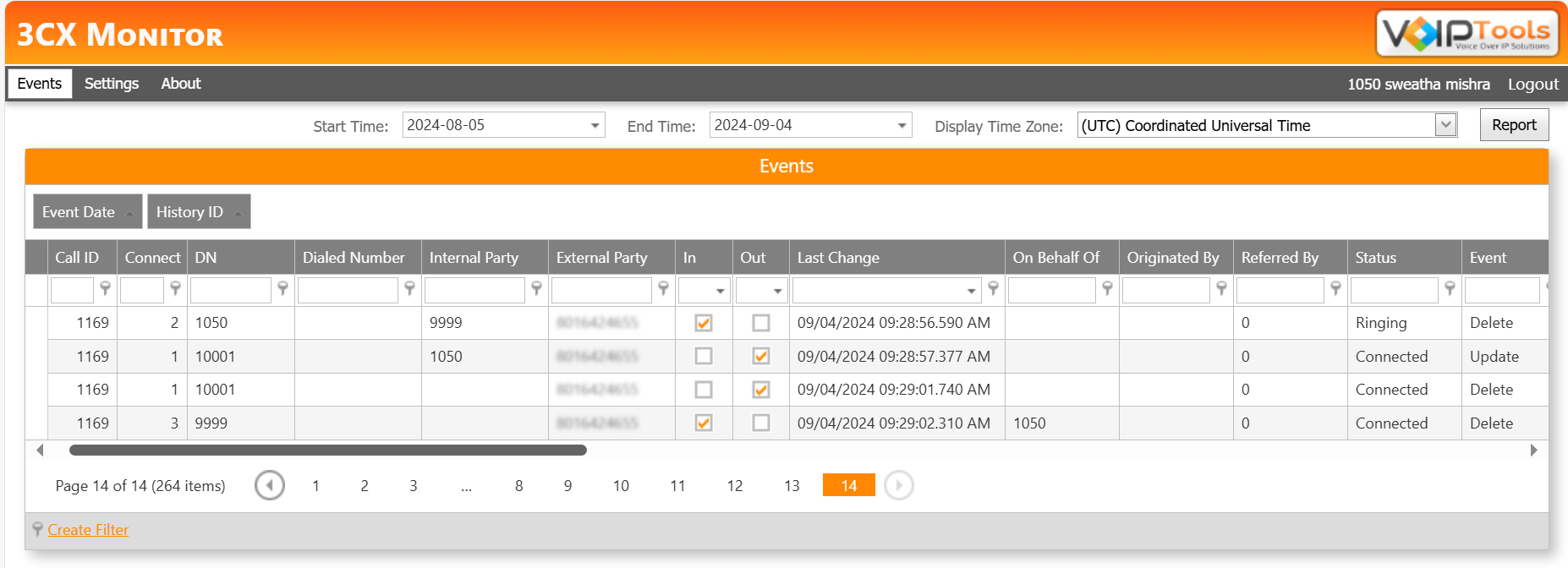
- Scenario 7: Call from Outside Number to Extension
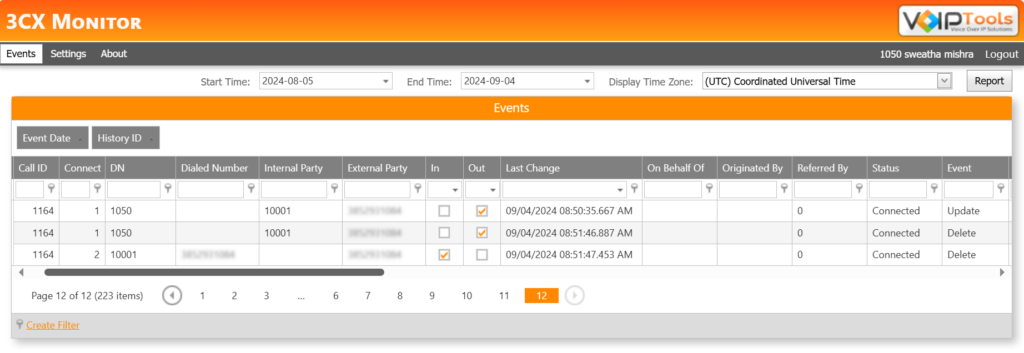
Need Support? #
You get quick answers to most of your inquiries in our online manual. If you prefer direct contact, we offer various support channels, including phone, email, live chat, and our helpful VoIPTools forums.
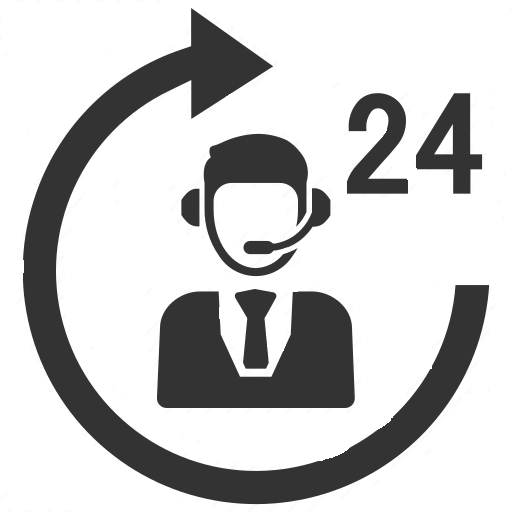
24/7 Support Availability #
Rest assured, our dedicated team is here to assist you around the clock, every day of the year. Whether you’re based in the USA or India, we’re ready to provide prompt responses to your technical queries.
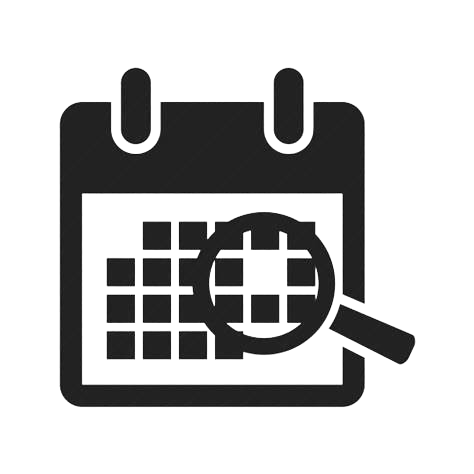
Windows Event Log for VoIPTools Applications and Services #
For troubleshooting any application errors, our Windows Event Log contains a comprehensive list of error messages, warnings, and informative notes related to all our VoIPTools applications and services. It’s a valuable resource to help you pinpoint and resolve any issues you may encounter.
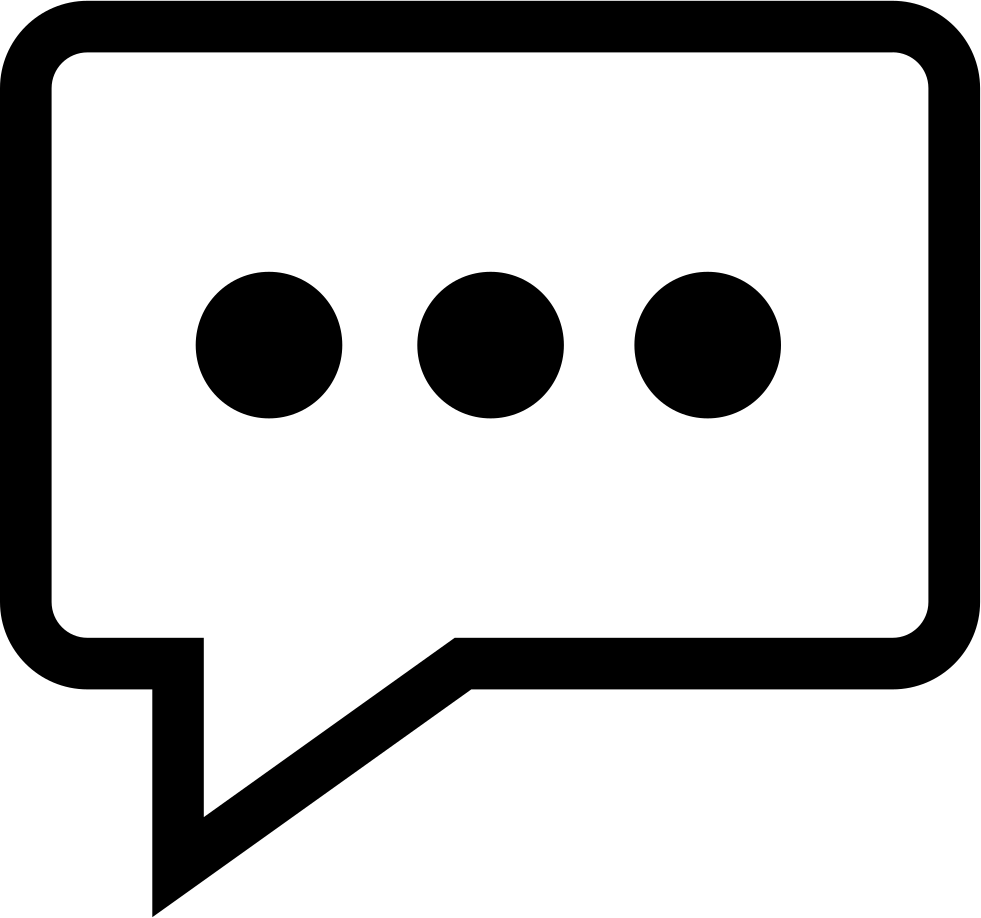
Join Our Forum Community #
Are you looking to collaborate with other VoIPTools customers facing similar challenges? Our forum is the perfect platform to exchange ideas, solutions, and best practices. Join the conversation at: https://www.voiptools.com/community/

Real-Time Live Chat Assistance #
Got questions that need immediate answers? Our chat support team is available to assist you in real time. Just click on the Live Chat button located at the lower right corner of our website, and we’ll acknowledge your queries right away.

Efficient Email Support #
To ensure a thorough understanding of your concerns, email us at support@voiptools.com. Describe your issue in detail, and we’ll get back to you within one business day with the support you need.
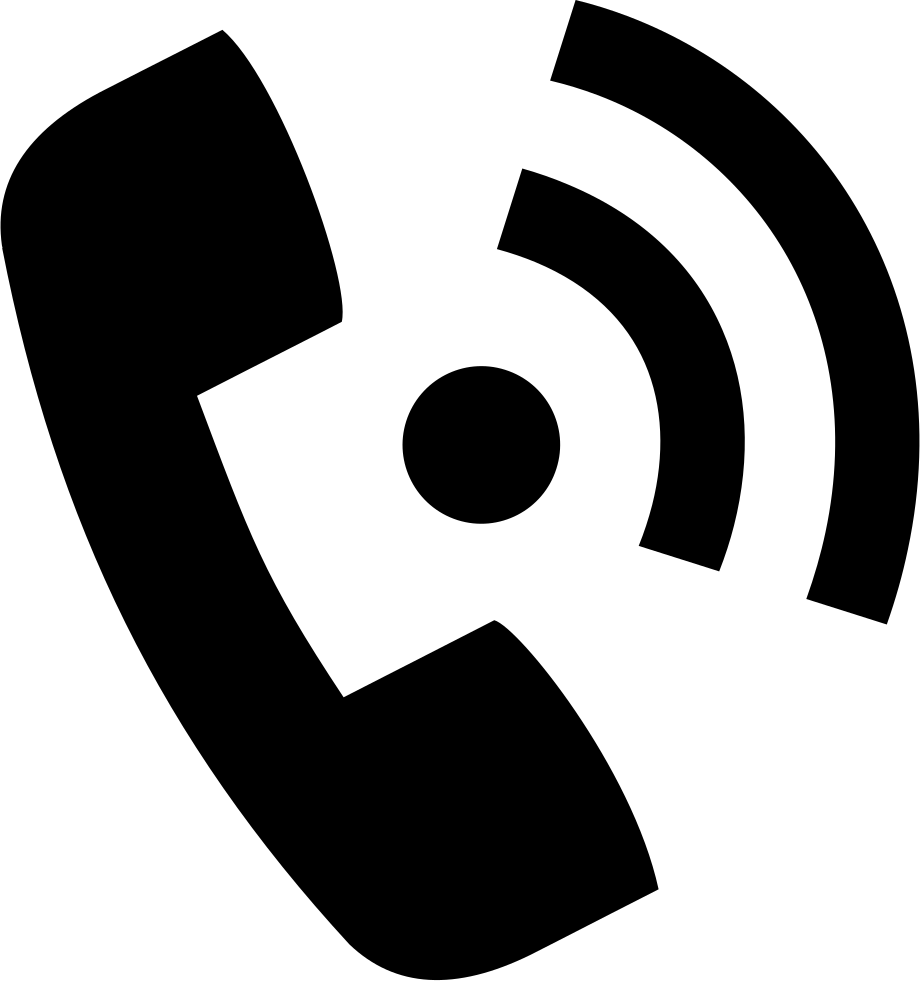
Reach Us by Phone #
If you prefer to speak with a representative directly, you can reach us at +1 801-642-4655. Our attentive team is available to take your calls from 8:00 AM to 6:00 PM (Central Standard Time).
Comprehensive support services: #

Free Support #
If you’ve purchased our products through a VoIPTools Partner, rest assured that they provide first-level support at no additional cost. Partners have access to 100% free technical assistance and actively participate in the troubleshooting process.
VoIPTools customers enjoy access to our online manuals and receive support through emails (with responses within one business day) and live chat. However, please note that we do not provide remote server login assistance.

Paid Support #
For a more hands-on experience, consider our “Installation Support” package. Our expert support team can log in to your servers, and install and configure all our tools. This comprehensive service includes setting up SQL Server Express and Internet Information Server if necessary. We’ll work closely with you to tailor our applications to meet your requirements.
We’re committed to providing top-notch support to ensure your VoIPTools experience is smooth and hassle-free. Contact us today, and let us assist you in making the most of our powerful tools!
